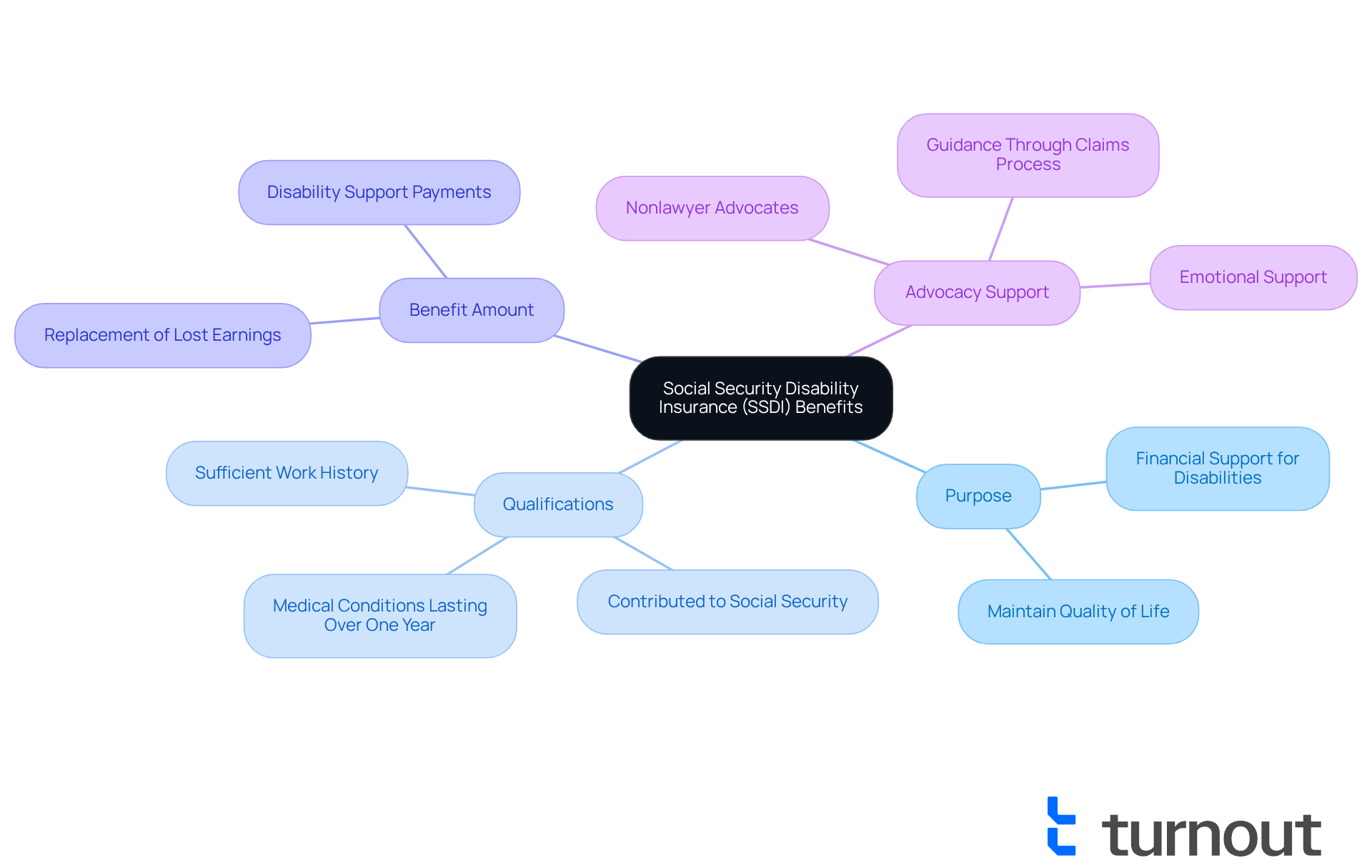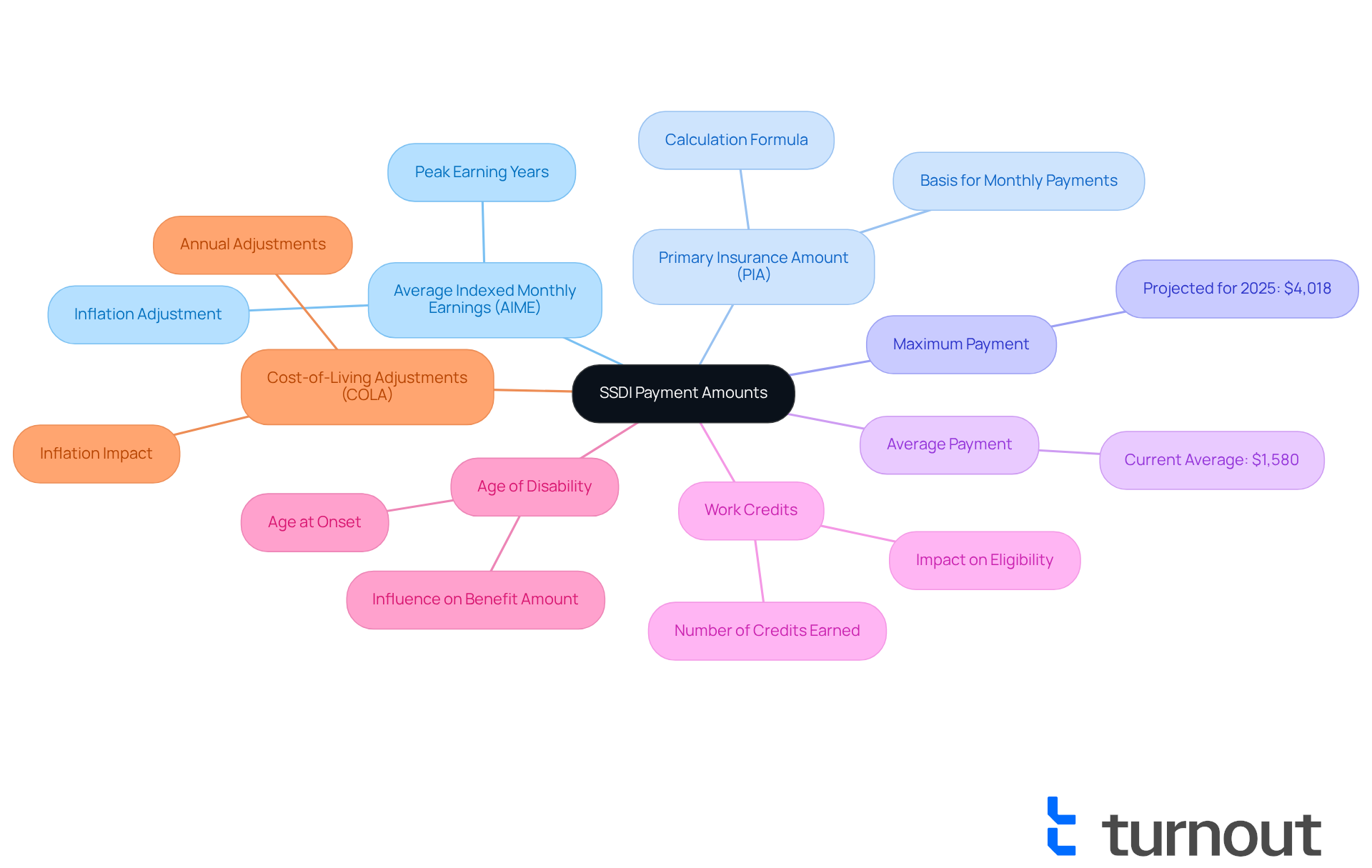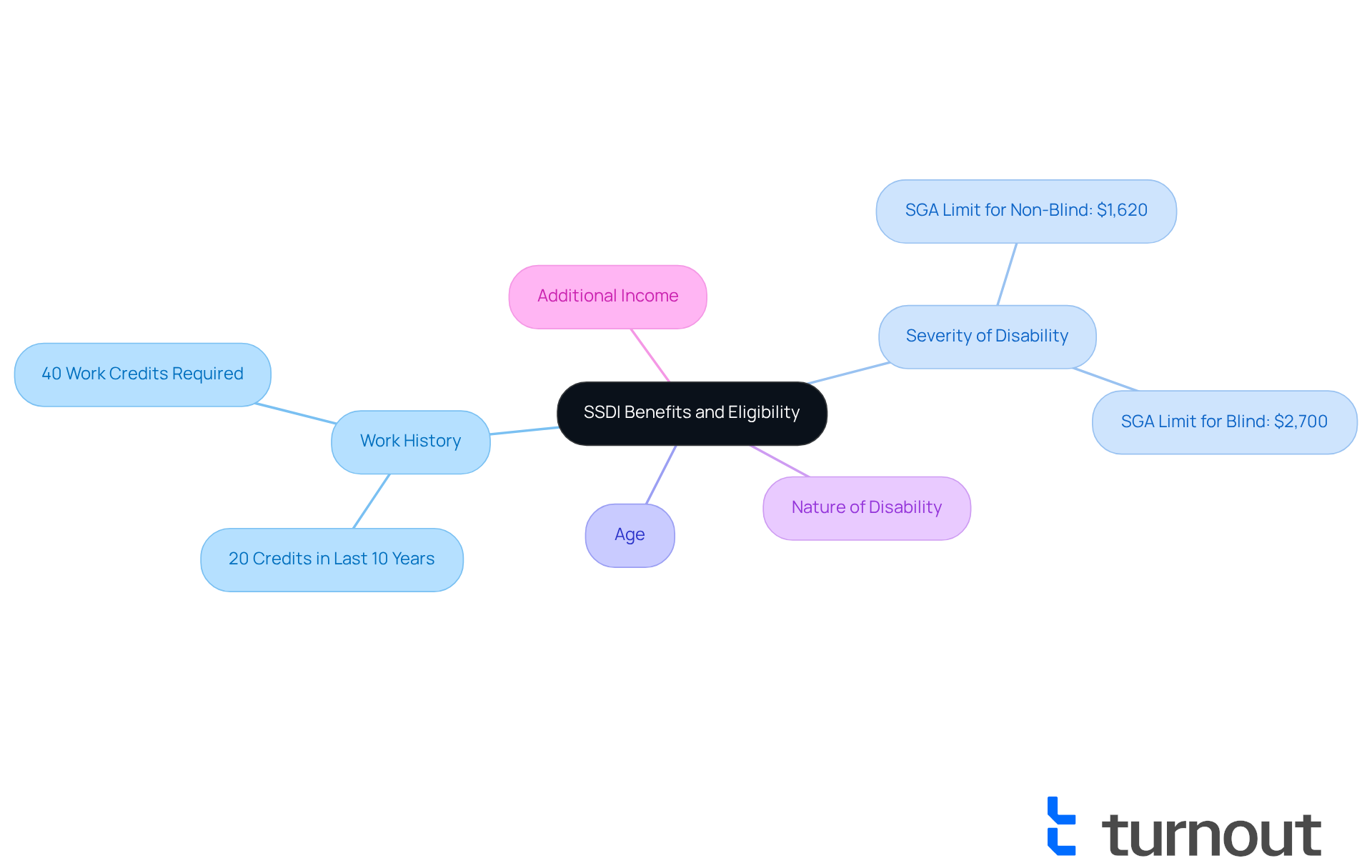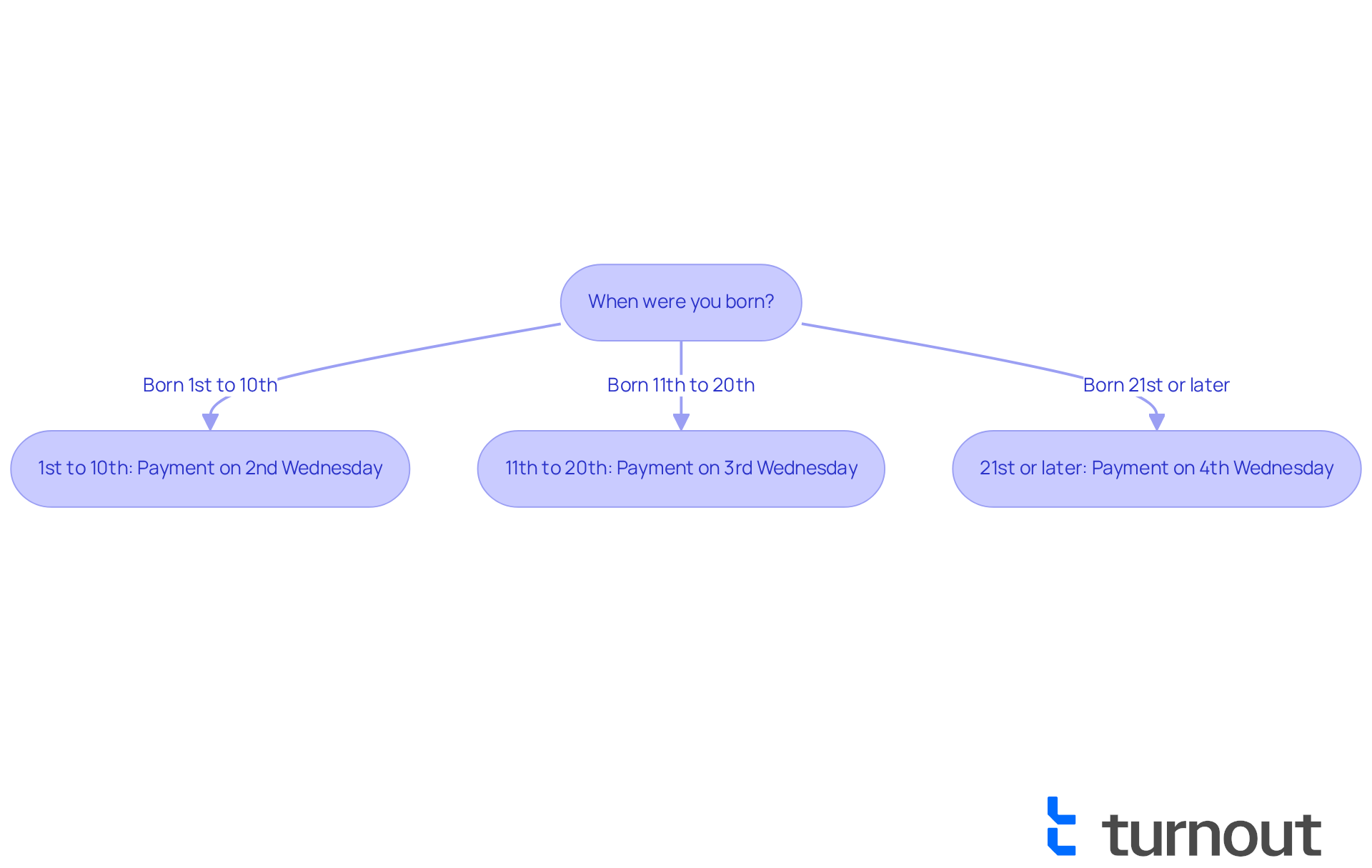Overview
Understanding how benefit amounts for Social Security Disability Insurance (SSDI) are determined can be a complex journey. We recognize that many individuals face uncertainty regarding their financial support. SSDI payments are calculated based on your Average Indexed Monthly Earnings (AIME), along with other important factors such as your work history and the severity of your disability.
It's common to feel overwhelmed by these details. To help you navigate this process, it's important to know that:
- The maximum monthly benefit for 2025 is projected to be $4,018.
- The average benefit is around $1,580.
This information can provide a clearer picture of what to expect.
Remember, you are not alone in this journey. We're here to help you understand your options and ensure you receive the support you deserve.
Introduction
Navigating the complexities of Social Security Disability Insurance (SSDI) benefits can often feel overwhelming, especially for those facing the challenges of a qualifying disability. We understand that this journey can be daunting. This article aims to illuminate the essential factors that influence benefit amounts, providing clarity on how these payments are calculated and what recipients can anticipate in 2025.
As individuals strive for financial stability in uncertain times, questions about eligibility criteria and the effects of income on benefits can weigh heavily. What key elements should applicants keep in mind to ensure they receive the support they truly deserve?
You're not alone in this journey, and we're here to help guide you through it.
Defining Social Security Disability Insurance (SSDI) Benefits
Social Security Disability Insurance is a national initiative designed to provide financial support for individuals unable to work due to a qualifying disability. We understand that navigating this process can be overwhelming. To qualify for Social Security Disability Insurance, individuals must have a sufficient work history and have contributed to Social Security taxes. This program aims to assist those who have contributed to the system and now find themselves unable to earn a living due to medical conditions expected to last at least one year or result in death.
The benefit amount for social security disability is intended to replace a portion of lost earnings through disability support payments, helping recipients maintain a basic quality of life while managing their disabilities. At Turnout, we recognize the difficulties that come with managing disability claims. Our trained nonlawyer advocates are here to help you through each step, ensuring you receive the support you need without the necessity of legal representation. Remember, you are not alone in this journey; we are here to help.

Calculating SSDI Payment Amounts: Key Factors and Methods
Navigating disability assistance can be overwhelming, and we understand that many people face challenges in this area. The benefit amount for social security disability you receive largely depends on your Average Indexed Monthly Earnings (AIME), which reflects your peak earning years adjusted for inflation. The Social Security Administration (SSA) uses a formula to calculate your Primary Insurance Amount (PIA), which is the basis for your monthly payments.
For 2025, the maximum SSDI payment is projected to be $4,018 per month, while the average payment hovers around $1,580. Factors such as the number of work credits you've earned, the age at which you become disabled, and your overall earnings history significantly influence the benefit amount for social security disability.
Moreover, each year, a Cost-of-Living Adjustment (COLA) is applied to help your payments keep pace with inflation. At Turnout, we are here to support you. We offer tools and services, including trained nonlawyer advocates, to help you navigate these complex calculations and processes. Remember, Turnout is not a law firm and does not provide legal advice. Our goal is to ensure you receive the financial assistance you deserve without the need for legal representation.
You are not alone in this journey. We’re here to help you every step of the way.

Factors Influencing SSDI Benefit Amounts and Eligibility
Navigating the world of SSDI benefits can be overwhelming, and several factors play a crucial role in determining the benefit amount for social security disability and eligibility. We understand that your work history is vital; applicants typically need at least 40 work credits, with 20 earned in the last 10 years. Additionally, the severity of your disability and how it affects your ability to perform substantial gainful activity (SGA) is carefully assessed. For 2025, the SGA limit is set at $1,620 monthly for non-blind individuals and $2,700 for those who are blind.
Other important considerations include:
- Your age
- The nature of your disability
- Any additional income sources that may influence your eligibility
Acknowledging these factors is essential for anyone looking to navigate the disability benefits application process effectively. At Turnout, we’re here to help. We offer access to trained non-professional advocates and a variety of tools designed to assist you in this complex journey. You are not alone in this process, and we are committed to ensuring you receive the support you need without the necessity of legal representation.

Understanding SSDI Payment Timing and Frequency
We understand that managing finances can be challenging, especially regarding the benefit amount for social security disability payments. These payments are typically issued on a monthly basis, and the payment date is determined by your birth date.
- If you were born between the 1st and 10th of the month, you will receive your payments on the second Wednesday.
- For those born between the 11th and 20th, payments arrive on the third Wednesday.
- If your birthday falls after the 20th, you can expect your payment on the fourth Wednesday.
It's important to be aware of this schedule so you can plan your finances accordingly. To help you stay informed, the SSA provides a payment schedule each year, which is accessible online. This ensures you know exactly when to expect the benefit amount for social security disability, giving you peace of mind as you navigate your financial journey. Remember, you are not alone in this process; we are here to help you every step of the way.

Conclusion
Understanding Social Security Disability Insurance (SSDI) benefits is crucial for those navigating the complexities of disability support. This program is designed to provide essential financial assistance to individuals who can no longer work due to qualifying disabilities, ensuring they maintain a basic quality of life. We understand that the intricacies of benefit amounts, eligibility criteria, and payment schedules can be daunting. However, with the right information and support, you can successfully access the help you need.
Key factors influencing SSDI benefit amounts include:
- Average Indexed Monthly Earnings (AIME)
- Work credits
- Severity of the disability
As highlighted, the maximum payment for 2025 is projected at $4,018 per month, while the average payment stands around $1,580. Understanding these calculations and the various elements that impact eligibility, such as age and additional income, is vital for anyone applying for SSDI benefits. Resources and support systems, like those offered by Turnout, can significantly ease this process.
Ultimately, the journey toward securing Social Security Disability benefits does not have to be a solitary one. By remaining informed about the current benefit amounts for Social Security Disability in 2025, the methods for calculating SSDI payments, and the payment timing, you can better prepare for your financial future. It’s common to feel overwhelmed, but it is essential to seek assistance when needed. There are dedicated advocates ready to help you navigate this complex landscape. Taking proactive steps today can lead to a more secure tomorrow for those facing the challenges of disability.
Frequently Asked Questions
What is Social Security Disability Insurance (SSDI)?
Social Security Disability Insurance is a national program that provides financial support to individuals who are unable to work due to a qualifying disability.
What are the eligibility requirements for SSDI?
To qualify for SSDI, individuals must have a sufficient work history and must have contributed to Social Security taxes.
What types of disabilities qualify for SSDI benefits?
SSDI benefits are available for medical conditions that are expected to last at least one year or result in death.
How does SSDI help recipients financially?
The benefit amount is designed to replace a portion of lost earnings, helping recipients maintain a basic quality of life while managing their disabilities.
Who can assist with the SSDI application process?
Trained nonlawyer advocates, such as those at Turnout, can help individuals navigate the SSDI application process without the need for legal representation.




